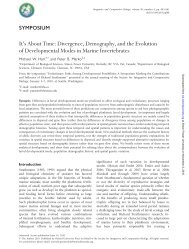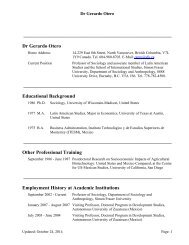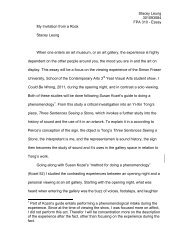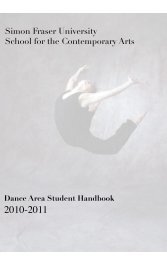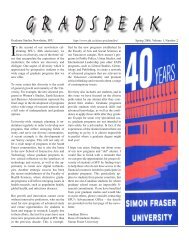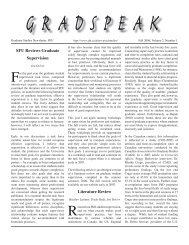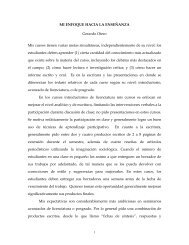WHO ARE THE PEASANTS? David Barkin - Project MUSE
WHO ARE THE PEASANTS? David Barkin - Project MUSE
WHO ARE THE PEASANTS? David Barkin - Project MUSE
You also want an ePaper? Increase the reach of your titles
YUMPU automatically turns print PDFs into web optimized ePapers that Google loves.
REVIEW ESSAYS 279when neoliberal policies privatize communal lands and generate otherthreats to territory and resources (as in S. Hvalkof’s chapter on indigenouspolitics in Peru). Along with privatization and free trade, whichundermine the productive structures and capacities of many producers,these developments impoverish new social groups, accentuate inequalities,weaken the very foundations of community, and imperilsustainability. The imaginative use of space in this collection, and inthe literature from which it stems, leads us to “imagine a kind of trafficbetween the global and the local” (130) and a defense of communitythat currently involves transnational communities modifying traditionalpatterns and institutions.Chase’s study of privatization in Minas Gerais, Brazil, examines how“household and community economies, gender, fertility, and migrationare central to the outcomes of neoliberalism” (17). H. Safa highlightsthe rise of female-headed households as a cultural feature in the Caribbean;their responses to changing conditions, as they participate in theexport manufacturing economy (maquiladoras), and as they have modifiedhistorically determined patterns of race, colonialism, and familystructure. As she has done elsewhere, Safa also traces men’s reactionsto their diminished status as breadwinners, creating the myth of “sexuallypromiscuous” women with a lack of commitment to family values,as they abandon the Dominican Republic for greener pastures. S.Gudeman and A. Rivera-Gutiérrez use their ethnographic research in avariety of Guatemalan settings to show:how humans make and remake communities in relation to marketpractices. ...[Their insights show that one set of] many solutions to contemporaryenvironmental problems need to come from “outside” the realm of the marketand private property, and that “the economy,” ...[of] contemporary discourse,does not encompass all forms of material behavior. (160–61)The final chapters on Mexico point to the dynamic nature of restructuringin the present system. González de la Rocha and A. Escobar Latapíwrite about the declining prospects of many families in Guadalajara, inspite of its efforts to recreate itself as a “new Silicon Valley” becauselimited employment opportunities intensify migratory pressures anderode traditional structures of collective responsibilities among generationsand within extended kinship structures. O. Pi-Sunyer’s reporton the effects of a rapidly growing sector of the global system—tourism—andblends a study of the changing character of “Mayan-ness”with an inquiry into the deepening relationship of local people withpowerful forces of national memory and globalization.Re-reading these books from the vantage point of rural studies inLatin American, one cannot help but offer a conjecture about the growingabyss between studies coordinated from the North and those originatingin the South. The working group or rural development of the



